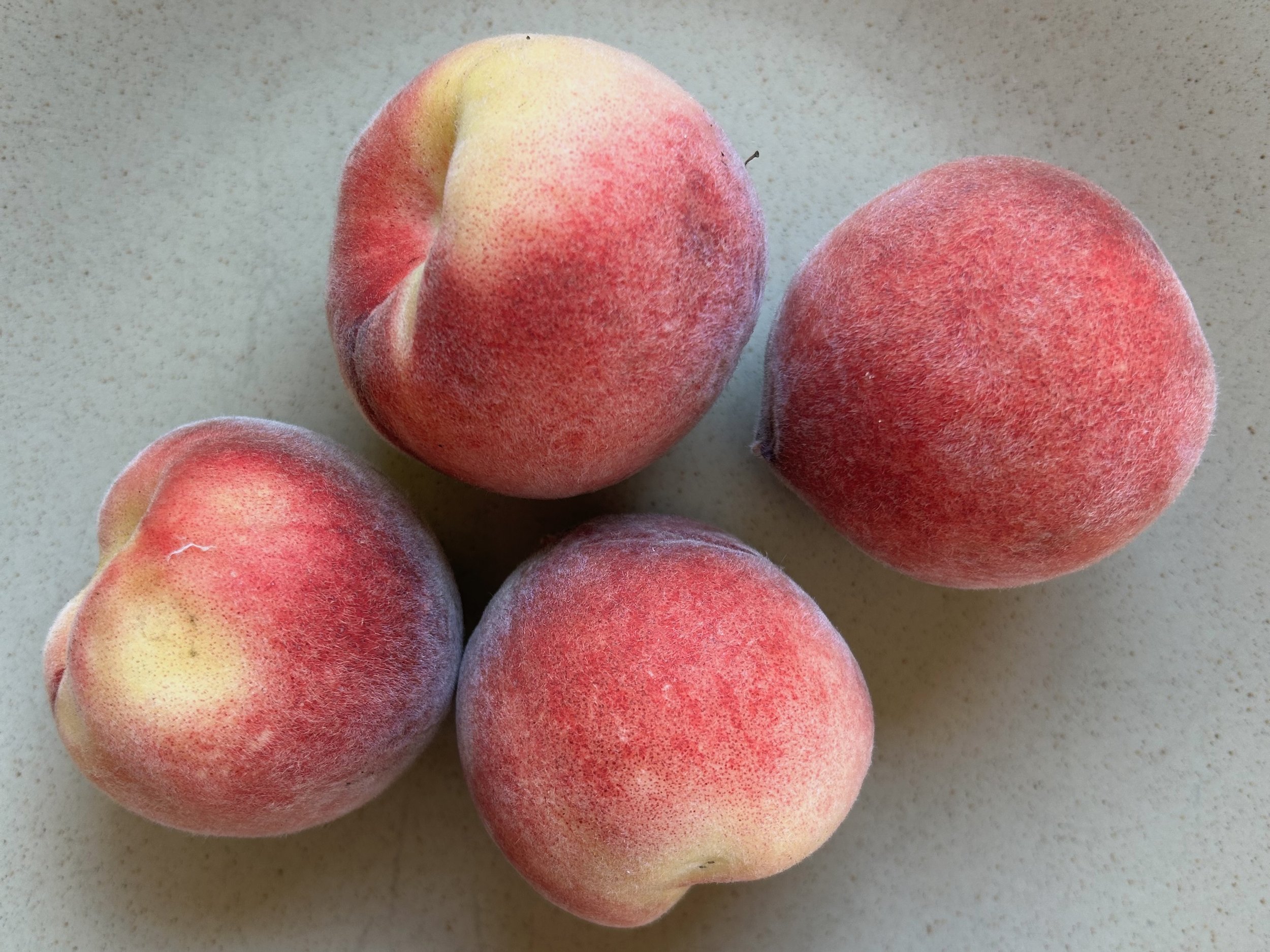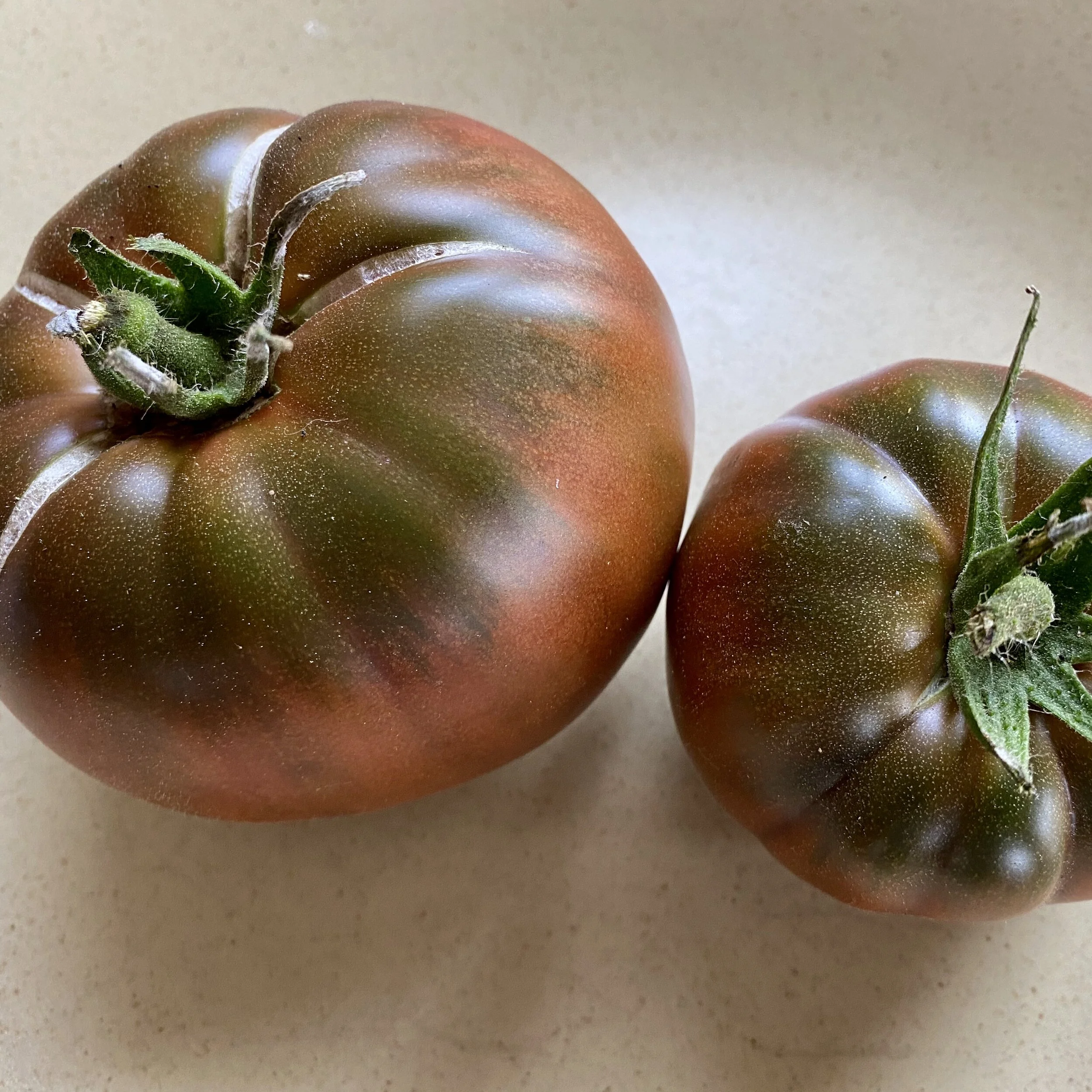In My San Diego Garden and Kitchen
This week’s post has to be about nectaplums. My post on July 14 noted that the harvest was just beginning. It was ill-timed considering our trip to Massachusetts to help our son and family move into their new (old, c. 1688) home July 21-28. When family and especially two special grandsons beckon, nectaplums take second place.
Photo capture by my neighbor from inside her home.
Then well-laid plans for a house sitter and garden tenders fell apart. So the compost bin, a squirrel and probably some rats took more than we anticipated. The good news is that if picked slightly firm, nectaplums hold well in the fridge. We had picked several dozen before we left.
Not wanting to encourage the squirrel, we stripped the tree on our return, shared the bounty with neighbors and set about using them as they ripened. A downside of the hybrid is that the fruit can go from firm to ripe to rotten in just one day when set out on the counter in warm weather.
The fruit and sugar mixture sits covered on the counter with a good stir a day after assembling. On day two, I strained the fruit which produced about two cups of fruity syrup. To that I added about 1.5 cups of apple cider vinegar which yielded just shy of a quart of drinking vinegar. It will keep in the fridge for a couple months but mine never lasts that long.
I prefer a ratio of one part drinking vinegar to two parts sparkling water. The timid will try a splash with sparkling water or alcohol. The adventuresome will choose equal parts.
I also made a nectaplum cobbler and some pureed sauce. If I can find room in the chest freezer, I’ll make the puree for ice cream. Then I just add cream to the mix to make what I’ve previously described as, “a delicate, fragrant pale pink cloud of sweetness and fruit.”
This was our first crop of Babcock peaches, about fifteen. As a child, I remember eating Babcock peaches from my grandparents’ tree in Laguna Beach. They were white with a little red near the center and incredibly juicy. These did not disappoint.
The description from Trees of Antiquity in Paso Robles, California. sums up the goodness of this low-chill peach. “The Babcock peach tree is an old favorite from Berkeley, California dating back almost hundred years to 1923. The Babcock peach is a white-fleshed freestone, sweet and juicy, aromatic, low acid.”
The Emerite pole beans again provide a robust harvest. I have eager takers and lots of recipes. Blanching and freezing worked well last summer so I’m “putting some by.”
Tomatoes are just beginning as the zucchini slows. A story for next time.
Sunday’s church bouquet, Little Ollie foliage, alstroemeria, Chocolate Lace Flower (Floret) and Apricotta cosmos.
Check out Harvest Monday, hosted by Dave at Happy Acres blog and see what garden bloggers around the world harvested last week.
To leave a comment, click on “Leave a comment/Show comments,” enter the comment, then insert your name. Finally, click on “Comment as Guest” to post comment.

















